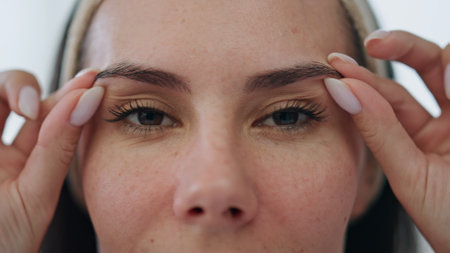Understanding Sun Damage in the UK Climate
While the UK may be renowned for its overcast skies and rainy spells, the British climate presents unique challenges when it comes to sun-related skin concerns. Contrary to popular belief, even on cloudy days, ultraviolet (UV) rays penetrate through, contributing to cumulative skin damage over time. The intermittent bursts of sunshine during spring and summer—often welcomed after long grey winters—can catch many off guard, leading to unintentional overexposure. Compounded by the increasing intensity of UV radiation due to environmental changes, residents across the UK are becoming more aware of the need for effective sun repair. This growing consciousness is driving demand for advanced antioxidant skincare solutions tailored specifically for British weather conditions, where fluctuating UV levels and humidity require innovative protection and recovery strategies.
Antioxidants in Skincare: Essential Ingredients Explained
When it comes to sun repair, antioxidants have emerged as indispensable agents in modern British skincare routines. Understanding the science behind these ingredients is crucial for selecting products that effectively combat UV-induced damage, which is a growing concern given the UKs increasingly variable climate and intermittent sun exposure. Below is a technical overview of the most prominent antioxidants found in UK formulations, how they function at the molecular level, and why their tailored use is especially pertinent for local skin health needs.
Key Antioxidant Ingredients and Their Mechanisms
| Antioxidant | Mechanism of Action | Formulation Adaptations for the UK |
|---|---|---|
| Vitamin C (Ascorbic Acid) | Neutralises free radicals, stimulates collagen synthesis, brightens hyperpigmentation | Stabilised derivatives (e.g., Sodium Ascorbyl Phosphate) used to counteract humidity and pollution; often paired with ferulic acid for enhanced photoprotection |
| Vitamin E (Tocopherol) | Lipid-soluble antioxidant, protects cell membranes from oxidative stress, supports barrier recovery | Combined with Vitamin C to provide synergistic UV protection; included in emollient-rich formulas suited to drier British skin types post-sun exposure |
| Polyphenols (Green Tea, Resveratrol) | Scavenge multiple types of ROS (reactive oxygen species), reduce inflammation, support DNA repair | Extracts sourced from locally grown botanicals for sustainability; lightweight gels or serums cater to the UKs often changeable weather patterns |
The UK Context: Why Formulation Matters
The UK’s unique climate presents distinctive challenges—frequent overcast conditions may lower perceived sun risk, but UVA rays still penetrate clouds and contribute to cumulative skin damage. As a result, antioxidant product development has shifted towards stable, easily absorbed formulations that protect against both environmental pollutants and unpredictable UV levels. Local research initiatives also focus on integrating antioxidants into daily-use moisturisers and sunscreens to promote consistent protection without feeling heavy or greasy—a common demand among British consumers.
Innovative Delivery Systems
The latest advancements include encapsulation technologies that preserve antioxidant potency until application. Liposomal Vitamin C and time-release polyphenols are becoming standard features in premium UK products, optimising efficacy throughout the day. This ensures that even during intermittent sun exposure—such as during commutes or outdoor leisure activities—skin receives continuous defence against oxidative stress.
Summary: Science-Led Solutions for Sun Repair
In summary, effective sun repair in the UK hinges on advanced antioxidant formulations that are responsive to local climatic realities and consumer expectations. By leveraging robust scientific evidence and innovative delivery methods, British skincare brands are setting new benchmarks for comprehensive UV protection and accelerated post-sun recovery.

3. Latest Innovations in Antioxidant Skincare
The UK skincare market is at the forefront of antioxidant innovation, responding to growing consumer demand for products that not only protect against sun damage but also actively repair skin. British brands and research labs are pioneering novel formulations, often integrating advanced ingredients sourced both locally and globally. Recent product launches have spotlighted next-generation antioxidants such as astaxanthin, a potent carotenoid derived from microalgae, and bakuchiol, a plant-based alternative to retinol renowned for its gentle yet effective action on sun-stressed skin.
Novel Ingredients Gaining Momentum
UK formulators are increasingly turning to indigenous botanicals—think sea buckthorn, blackcurrant seed oil, and Scottish heather extract—for their naturally high antioxidant content. These homegrown ingredients resonate with British consumers seeking sustainable and regionally relevant solutions. Additionally, the inclusion of stabilised vitamin C derivatives and ferulic acid is helping new products deliver improved efficacy in combating photoageing and pigmentation caused by UV exposure.
Encapsulation Technologies for Enhanced Delivery
One of the most exciting trends is the adoption of encapsulation technologies that protect sensitive antioxidants from degradation. Liposomal delivery systems and microencapsulation enable actives like vitamin E, coenzyme Q10, and green tea polyphenols to penetrate deeper into the skin while maintaining potency. This ensures longer-lasting results and minimises irritation—an important consideration for those with typically British fair or sensitive complexions.
British R&D Leads the Way
The UK’s robust research landscape is driving global advances in antioxidant skincare. Collaborative efforts between universities, biotech firms, and established beauty houses have resulted in patents for time-release antioxidant complexes and biomimetic peptides designed to bolster the skin’s natural defence mechanisms. Many products now undergo rigorous clinical trials in the UK to validate claims around repair and protection, offering peace of mind to discerning local consumers.
A Nod to Local Needs
With greater awareness of how Britain’s variable climate impacts skin health, brands are developing formulas tailored to address concerns like fluctuating humidity, pollution levels in urban areas, and the unique effects of intermittent sunshine. This localisation ensures that antioxidant skincare innovations remain highly relevant—and effective—for sun repair within the UK context.
4. What’s Effective for Sun Repair: Insights from UK Experts
Sun exposure in the UK, while often underestimated due to the country’s variable weather, remains a significant concern for skin health. British dermatologists and skincare professionals highlight that effective sun repair hinges on both innovative ingredients and clinical evidence. Below, we explore the most scientifically-backed antioxidant skincare treatments currently advocated by leading UK experts.
Expert-Recommended Antioxidants for Sun Repair
| Antioxidant Ingredient | Mechanism of Action | Clinical Evidence | UK Usage Trends |
|---|---|---|---|
| Vitamin C (L-Ascorbic Acid) | Neutralises free radicals, boosts collagen synthesis | Multiple RCTs show improvement in photodamage and pigmentation | Widely incorporated in serums and moisturisers; emphasis on stabilised formulas due to UK humidity |
| Niacinamide (Vitamin B3) | Reduces inflammation, repairs DNA damage, improves barrier function | Supported by peer-reviewed studies for reducing redness and uneven tone post-UV exposure | Favoured in multi-purpose products targeting sensitive skin common among Britons |
| Green Tea Extract (EGCG) | Soothes oxidative stress, offers anti-inflammatory benefits | Pilot studies suggest reduced erythema following UV exposure | Frequently recommended for individuals with rosacea-prone skin |
| Resveratrol | Mimics natural defence mechanisms against environmental stressors | Emerging research supports its role in enhancing cellular repair processes after sun damage | Increasingly popular in premium skincare ranges across the UK market |
The Professional Perspective: Real-World Results in the UK Climate
According to Dr. Alexandra Norris, consultant dermatologist at a London-based clinic, the efficacy of antioxidant-rich products is highly dependent on consistent use and correct application. “Many patients believe that a single application can undo weeks of sun exposure, but true repair requires cumulative protection and support,” she explains. Experts consistently recommend layering antioxidants under daily SPF—even during overcast British days—since UVA rays penetrate clouds and contribute to photoageing.
Combination Strategies for Enhanced Outcomes
A trend gaining traction among British skincare professionals is the combination of multiple antioxidants to address various pathways of sun-induced skin damage. For example, pairing Vitamin C with Vitamin E or Ferulic Acid has been shown to enhance photoprotective effects synergistically. Similarly, incorporating niacinamide into routines with retinoids can maximise DNA repair without exacerbating sensitivity—a crucial consideration given the prevalence of reactive skin types in northern climates.
Efficacy Beyond Ingredients: The Role of Formulation and Delivery Systems
The delivery system is another focal point for UK experts. Encapsulation technologies, such as liposomes or microemulsions, are increasingly recommended as they improve ingredient stability and penetration—especially important in fluctuating British temperatures. Dermatologists also stress the importance of avoiding potential irritants like fragrance or alcohol in post-sun repair regimens, instead prioritising formulations that bolster the skin barrier while delivering active antioxidants effectively.
5. Trends in Sustainable and Localised Antioxidant Skincare
The UK’s skincare market is witnessing a significant shift towards sustainability and local relevance, particularly within the realm of antioxidant-rich sun repair solutions. Eco-conscious brands are increasingly prioritising ethical sourcing, recyclable packaging, and reduced carbon footprints to align with consumer expectations. This movement is not just a marketing strategy; it reflects a broader societal demand for responsible beauty that resonates with British values of environmental stewardship.
Eco-Conscious Brands Leading the Way
British skincare brands are setting benchmarks for sustainable innovation by integrating green chemistry principles, cruelty-free formulations, and transparent supply chains. Certifications such as Soil Association Organic and B Corp are becoming sought-after indicators of trustworthiness in antioxidant product ranges. The move away from single-use plastics and towards refillable systems or biodegradable materials is also gaining traction, shaping the way consumers perceive quality and efficacy.
Homegrown Ingredients: A Local Advantage
There is a rising trend towards utilising locally-sourced ingredients—think British-grown blackcurrants, sea buckthorn, elderberries, and even native seaweed species—as potent sources of antioxidants in skincare. These homegrown botanicals not only reduce transportation-related emissions but also appeal to the UK consumer’s desire for products with provenance and traceability. This local-first approach supports regional agriculture while ensuring fresher, more effective actives tailored for British skin needs.
Demand for Locally-Relevant Solutions
UK consumers are increasingly seeking sun repair products formulated specifically for their climate and lifestyle. The demand extends beyond efficacy against UV damage; it encompasses pollution defence, hydration suited to temperate weather, and sensitivity to common UK skin concerns such as redness or dryness induced by variable conditions. As a result, bespoke formulations addressing these factors—often using innovative encapsulation technologies or synergistic blends of antioxidants—are gaining momentum among both established brands and indie formulators.
This convergence of sustainability, local ingredient sourcing, and tailored formulation underlines a new era of antioxidant skincare in the UK—one where effectiveness goes hand-in-hand with ethical responsibility and cultural relevance.
6. How to Build an Effective Sun Repair Routine in the UK
Creating a robust sun repair routine tailored for the UK’s unique climate and lifestyle requires a thoughtful approach to antioxidant skincare. Here’s practical guidance on integrating innovative antioxidant products into your daily regimen, with sensitivity to British weather patterns and local habits.
Step 1: Assess Your Sun Exposure
Despite frequent cloud cover, UV radiation remains a year-round concern across the UK. Evaluate your daily exposure—commuting, outdoor activities, or even time spent by windows—to determine the level of sun repair your skin needs.
Step 2: Choose Antioxidant-Rich Formulations
Select serums and creams containing proven antioxidants such as vitamin C, vitamin E, niacinamide, and resveratrol. UK-based formulations often blend these actives with local botanicals like sea buckthorn or blackcurrant for enhanced efficacy against environmental stressors.
Morning Routine Integration
After cleansing, apply an antioxidant serum to damp skin. Follow with a broad-spectrum SPF—essential even on overcast days—to lock in protection and boost the effects of antioxidants. Many British brands now offer lightweight, non-greasy SPFs designed for layering under makeup.
Evening Repair Rituals
Post-cleansing at night, opt for antioxidant treatments that pair with gentle exfoliators or overnight masks containing peptides and hyaluronic acid. This supports cell renewal while combating photoageing accumulated during daytime exposure.
Step 3: Adapt to Seasonal Shifts
UK residents should adjust routines throughout the year. In winter, prioritise hydrating antioxidants like ferulic acid and squalane to counteract central heating and dry air. Come summer, increase frequency of topical vitamin C application and consider reapplying SPF during extended outdoor activities or festivals.
Lifestyle Tips for Consistency
Keep travel-sized antioxidant mists or sticks in your bag for on-the-go protection—especially relevant for commuters and those enjoying city parks or coastal walks. Lastly, stay informed about new launches from homegrown brands leading innovation in sustainable, potent antioxidant formulas tailored to British consumers.
By understanding local conditions and aligning your skincare choices accordingly, you can build a truly effective sun repair routine that leverages the latest in antioxidant science—ensuring resilience against the unpredictable UK climate all year round.

